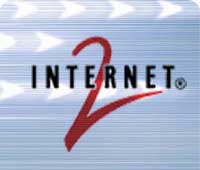Internet2 network has a breakthrough in speed
 With a 10-fold increase in speed, the high-definition 'The Matrix' movie version can be sent in a matter of seconds instead of half a minute as with the current Internet2 network, while using the usual broadband network This time is up to two days .
With a 10-fold increase in speed, the high-definition 'The Matrix' movie version can be sent in a matter of seconds instead of half a minute as with the current Internet2 network, while using the usual broadband network This time is up to two days .
Using the method of sending information by light of different wavelengths (different wavelengths), ultra-fast Internet2 operators are expecting an 80-fold increase in speed allowing researchers to connect telescopes all over world and perform tasks that require large bandwidth.
Internet2's chief curator, Douglas Van Houweling, said the new generation network could be ready to go into operation in the fall of 2007.
He said: as expected, this week researchers will set a new speed record - 8.8 gigabits per second, nearly reaching the current theoretical limit speed of Internet2 network of 10 Gbps, fast thousands of times compared to the current standard family broadband network.
Working in tandem with the current Internet, allowing universities, organizations and researchers to share information resources in real time, Internet2 Network is still sharing the optical cable of the international media. Qwest Communications International.
In the new network, Internet2 will use its own cable. The original service providers will use 10 colors, or wavelengths of light, to transfer data on a single cable, allowing the network to reach speeds of 100 Gigabit per second. Later, Internet2 was also expected to use up to 80 wavelengths.
Although the ability to send data using multiple wavelengths is not new, Internet2 will develop new electronic circuits, each capable of analyzing all 10 wavelengths.
With a 10-fold increase in speed, the high-definition 'The Matrix' movie version can be sent in a matter of seconds instead of half a minute as with the current Internet2 network, while using the usual broadband network This time is up to two days.
This upgrade is due to new research requirements. For example, astronomers are trying to link telescopes around the world, collecting data about a term. Speeding may also help American scientists exploit the vast nuclear physics industry around the world.
The record speed of Internet2 network was established in February by a team of researchers from Tokyo University, Amsterdam and several other research institutes. The data is transmitted from Tokyo via satellite to Amsterdam and then to Chicago and then back to Tokyo. The speed has surpassed 7.99 Gbps set in November last year.
There are about 200 US universities participating in Internet2.
You should read it
- Measuring the speed of Viettel, VNPT and FPT using Speed Of Me
- New technology speeds up data through optical fiber
- Network speed test with Charter Speed Test
- 8 ways to check the network speed extremely accurately, you should not ignore it
- Tell you 5 ways to increase network speed extremely fast and effective
- 8 ways to speed up network through Regedit in Windows 10
- How to check Internet speed with cmd command
- Mobile data connection too slow? Try the following 7 network acceleration techniques
- How to measure network speed
- Checking Internet speed, Wifi FPT, VNPT network, Viettel does not need software
- Speed up Internet connection by VPN virtual private network solution
- The 5G network in Korea is capable of downloading 800MB of data in 1 second






 Measuring the speed of Viettel, VNPT and FPT using Speed Of Me
Measuring the speed of Viettel, VNPT and FPT using Speed Of Me Network speed test with Charter Speed Test
Network speed test with Charter Speed Test 8 ways to check the network speed extremely accurately, you should not ignore it
8 ways to check the network speed extremely accurately, you should not ignore it Tell you 5 ways to increase network speed extremely fast and effective
Tell you 5 ways to increase network speed extremely fast and effective 8 ways to speed up network through Regedit in Windows 10
8 ways to speed up network through Regedit in Windows 10 IBM Unveils Breakthrough Optical Data Transmission Technology That Enables 'Light-Speed' AI Training
IBM Unveils Breakthrough Optical Data Transmission Technology That Enables 'Light-Speed' AI Training